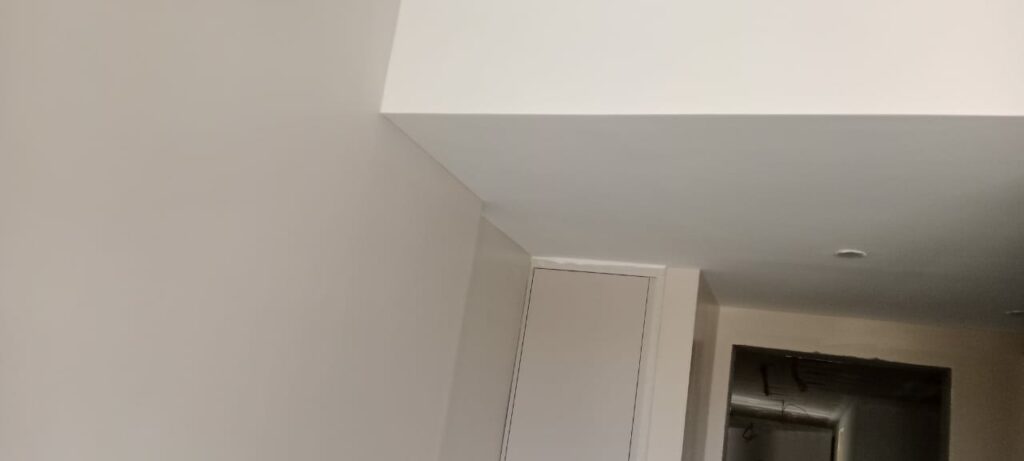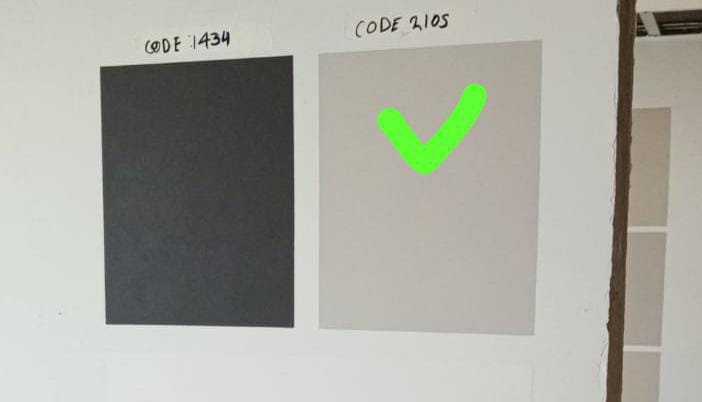
Understanding Different Types of Paint
A. Water-Based Paints
- Advantages:
- Easy cleanup with water
- Quick drying time
- Low odor
- Considerations:
- It may not be as durable as oil-based paints
- Limited color options
- Best applications:
- Interior walls
- Ceilings
- Woodwork
B. Oil-Based Paints
- Advantages:
- Durable and long-lasting
- Great for high-traffic areas
- Considerations:
- Strong odor
- Longer drying time
- Best applications:
- Trims
- Doors
- Exterior surfaces
C. Specialty Paints
- Types of specialty paints:
- Chalk paint
- Metallic paint
- Textured paint
- Ideal uses:
- Furniture
- Accent walls
- Factors to consider:
- Application method
- Surface Preparation
II. Selecting the Right Finish
A. Matte Finish
- Pros and cons:
- Hides imperfections
- Difficult to clean
- Best rooms to use:
- Bedrooms
- Living rooms
- Maintenance tips:
- Avoid harsh cleaning products
- Touch up any marks promptly
B. Eggshell Finish
- Characteristics:
- Slight sheen
- Washable
- Recommended for:
- Dining rooms
- Hallways
- Common misconceptions:
- Not just for eggs!
C. Satin vs. Gloss Finish
- Key differences:
- The glossy finish reflects light
- Satin has a subtle sheen
- Practical applications:
- Satin for walls, gloss for trims
- Tips for choosing between the two:
- Consider lighting in the room
III. Color Psychology and Trends
A. Understanding Color Psychology
- Impact of colors on mood:
- Warm colors for coziness
- Cool colors for serenity
- Choosing colors based on room function:
- Energizing colors for workspaces
- Relaxing colors for bedrooms
- Harmonizing colors within a space:
- Use a color wheel for complementary colors
B. Current Paint Trends
- Popular color schemes:
- Earthy tones
- Jewel tones
- Accent wall ideas:
- Bold patterns
- Ombre effect
- Incorporating trends without overwhelming a room:
- Start with small accents
C. The Timeless Appeal of Neutrals
- Versatility of neutral tones:
- Easy to match with decor
- Create a blank canvas for accessories
- Accentuating neutrals with textures:
- Mix and match different textures
- Woven rugs, velvet pillows
- Maintenance considerations:
- Stains may be more visible
IV. Factors to Consider Before Making a Decision
A. Lighting Conditions
- Natural vs. artificial light:
- Natural light can change color perception
- Artificial light affects the warmth of color
- Effects on paint colors:
- Test paint swatches in different lighting
- Choosing the right color under different lighting:
- Ask for samples to take home
B. Room Size and Layout

- Impact of color on perceived space:
- Dark colors make a room feel smaller
- Light colors open up a space
- Enhancing room proportions:
- Paint the ceiling a lighter color than the walls
- Use horizontal stripes to widen a room
- Creating cohesive color flow:
- Consider adjoining rooms
C. Personal Preferences and Longevity
- Expressing personal style through paint:
- An eclectic mix of colors
- Monochromatic palette
- Factors affecting paint durability:
- Quality of paint
- Surface Preparation
- Balancing trendiness with a timeless appeal:
- Choose trendy colors for accents
- Stick to classic colors for main surfaces
V. Steps to Successfully Paint Your Space
A. Preparing the Room
- Necessary tools and materials:
- Paint brushes
- Drop cloths
- Surface preparation:
- Clean walls thoroughly
- Patch any holes or cracks
- Safety precautions:
- Use goggles and gloves
- Ventilate the room
B. Choosing and Testing Paint

- Sampling different colors:
- Test on a small section of the wall
- Consider different lighting conditions
- Evaluating color swatches:
- Consider paint undertones
- Think about room function
- Understanding paint labels:
- Look for VOC content
- Check for washability
C. Execution and Aftercare
- Paint application techniques:
- Cut in edges first
- Use a roller for walls
- Drying and curing times:
- Follow the manufacturer’s instructions
- Wait for full curing before moving the furniture back
- Cleaning and maintenance tips:
- Use mild soap and water for cleaning
- Touch up paint as needed
Remember, choosing the perfect paint for your space is a combination of personal preferences, practical considerations, and long-term goals.
RELATED POST: The best home decor ideas.
Conclusion
In conclusion, selecting the right paint for your space is a crucial decision that can significantly impact the atmosphere and aesthetics of your home. By understanding different types of paint, finishes, color psychology, and trends and considering factors like lighting conditions, room size, and personal preferences, you can make an informed choice that enhances your living environment for years to come. Happy painting!
